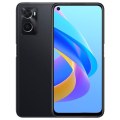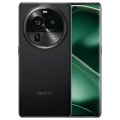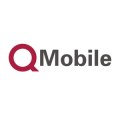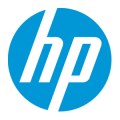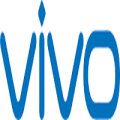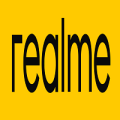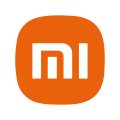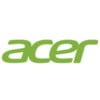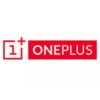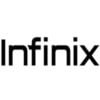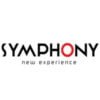Oppo A71
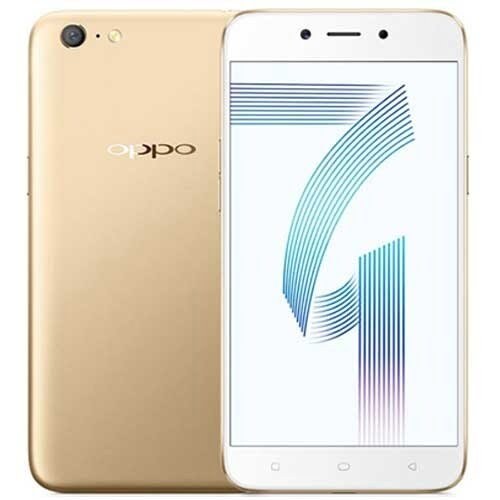


Oppo A71 Price in Bangladesh
The Oppo A71 Price in Bangladesh is BDT 12,500. This smartphone features a 5.2-inch IPS LCD display and is powered by a 1.5 GHz Octa-core MediaTek MT6750 processor. It comes with 3GB of RAM and 16GB of internal storage, expandable up to 256GB via external storage. The Oppo A71 has a 13 MP rear camera and a 5 MP front camera for selfies. It is powered by a 3000mAh Li-Ion battery, offering standard battery life. The Oppo A71 Price in Bangladesh makes it a budget-friendly option with reliable performance and camera quality.
Specifications
General
| Model | Oppo A71 |
| Announced | 2017, September |
| Released | 2017, September |
| Status | Available |
Design
| Dimensions | 148.1 x 73.8 x 7.6 mm (5.83 x 2.91 x 0.30 in) |
| Weight | 137 g (4.83 oz) |
| Colors |
Gold, Black |
Network
| Technology | GSM / UMTS / LTE |
| 2G Network |
GSM 850 / 900 / 1800 / 1900 - SIM 1 & SIM 2 |
| 3G Network |
UMTS 900 / 2100 / 850 |
| 4G Network |
LTE band 1(2100), 3(1800), 5(850), 7(2600), 8(900), 38(2600), 40(2300), 41(2500) |
| GPRS <strong>GPRS</strong> (General Packet Radio Service) is a packet oriented mobile data service on the 2G and 3G cellular communication system's global system for mobile communications (GSM), Generally, GPRS is used for the purpose of wireless data transfer, such as sharing pictures and videos or browsing the Internet via a mobile phone connection. | |
| EDGE <strong>EDGE</strong> (Enhanced Data GSM Environment) is a wireless network technology generally considered the next step in the 2G network offers data transfer rates up to four times faster than ordinary GSM networks, Generally, EDGE is used for the purpose of wireless data transfer, such as sharing pictures and videos or browsing the Internet via a mobile phone connection. | |
| Speed | HSPA, LTE |
Display
| Display Type <strong>Display Technology => </strong> A number of display technologies and types used in mobile phones => TFT (Thin Film Transistor), IPS (In-Place Switching), OLED (Organic Light Emitting Diode), AMOLED (Active-Matrix Organic Light-Emitting Diode), Super AMOLED (an even advanced version of AMOLED), Resistive Touchscreen (Resistive touchscreens contain two layer of conductive material with a very small gap between them which acts as a resistance), Capacitive Touchsceen (Capacitive touchscreen technology consists of a layer of glass coated with a transparent conductor) | IPS LCD capacitive touchscreen, 16M colors |
| Size | 5.2 inches, 74.5 cm2 (~68.2% screen-to-body ratio) |
| Resolution | 720 x 1280 pixels, 16:9 ratio (~282 ppi density) |
Camera
Main camera
| Camera Setup | Single |
| Primary <strong>Camera</strong> is able to capture photographs and usually videos, The most important characteristics of a camera are the resolution (measured in megapixels), lens focus type (fixed or automatic), higher megapixel cameras are known to capture higher quality photos, but not always a good measurement of the photos quality. |
13 MP, PDAF, f/2.2 |
| Features |
LED flash, HDR, panorama |
| Video | 1080p@30fps |
Selfie camera
| Camera Setup | Single |
| Primary <strong>Camera</strong> is able to capture photographs and usually videos, The most important characteristics of a camera are the resolution (measured in megapixels), lens focus type (fixed or automatic), higher megapixel cameras are known to capture higher quality photos, but not always a good measurement of the photos quality. |
5 MP, f/2.4 |
Hardware
| Chipset <strong>Chipset</strong> is a group of integrated circuits designed to perform one or a more dedicated functions, often with real time computing constraints, Popular smartphones are equipped with more advanced embedded chipsets that can do many different tasks depending on their programming. | Mediatek MT6750 (28 nm) |
| CPU <strong>CPU</strong> (Central Processing Unit) mostly known as processors, CPU processes instructions in order to carry out certain functions that make your device operate properly. Processors are often described as the brain of computers, smartphones and tablets, Smartphones and tablets rely on processors to carry out their every task, Processors are an incredibly important factor in selecting any type of computing device, including your smartphone. | Octa-core (4x1.5 GHz Cortex-A53 & 4x1.0 GHz Cortex-A53) |
| GPU <strong>GPU</strong> (Graphics Processing Unit) is a single-chip processor designed to rapidly manipulate and alter memory to accelerate the creation of images in a frame buffer intended for output to a display, This includes things such as lighting effects, object transformations, and 3D motion. | Mali-T860MP2 |
| RAM (Memory) <strong>RAM</strong> (Random Access Memory) is a type of computer memory that can be accessed randomly, any byte of memory can be accessed without touching the preceding bytes that allows information to be stored and accessed quickly from random locations. RAM is the most common type of memory found in computer systems, smartphones, tablets and other electronic devices. | 3 GB RAM |
| Internal Storage <strong>Internal Storage</strong> is a data storage space (flash memory) mostly used in smartphones, tablets and other electronic devices where operating system, apps, music, photos, videos, files and other user data Is stored. | 16 GB |
| Sensors <strong>Sensors</strong> are electronic components that detects and responds to some type of input from the physical environment. The specific input could be light, heat, motion, moisture, pressure and location, The output is generally a signal that is converted to use in computing systems, a location sensor, such as a GPS receiver is able to detect current location of your electronic device. |
Accelerometer, proximity, compass |
Connectivity
| Bluetooth <strong>Bluetooth</strong> is a wireless communications technology for exchanging data between mobile phones, headsets, computers and other network devices over short distances without wires, Bluetooth technology was primarily designed to support simple wireless networking of personal consumer devices. | 4.0, A2DP |
| Infrared <strong>Infrared</strong> connectivity is an old wireless technology used to connect two electronic devices. It uses a beam of infrared light to transmit information and so requires direct line of sight and operates only at close range. | |
| USB | microUSB 2.0, USB On-The-Go |
| GPS <strong>GPS</strong> The Global Positioning System is a satellite-based radio navigation system, GPS permits users to determine their position, velocity and the time 24 hours a day, in all weather, anywhere in the world, In order to locate your position, your device or GPS receiver must have a clear view of the sky. | Yes, with A-GPS |
| NFC <strong>NFC</strong> (Near field communication) is a set of standards for smartphones and similar devices to establish peer-to-peer radio communications with each other by touching them together or bringing them into proximity, usually no more than a few inches. |
Battery
| Battery Type <strong>Battery Type => </strong> Cell phones run on various kinds of batteries depending on the manufacturer, phone size or shape and features. There are basically four types of cell phone batteries => Lithium Polymer, Lithium Ion, Nickel Metal Hydride and Nickel Cadmium. | Non-Removable Li-Po |
| Capacity <strong>Battery Capacity</strong> is a measure (typically in Amp-hr) of the charge stored by the battery, and is determined by the mass of active material contained in the battery. The battery capacity represents the maximum amount of energy that can be extracted from the battery under certain conditions. | 3000 mAh battery |
Oppo A71 Review A Mid-Range Marvel That Delivers
Introduction to Oppo A71
When it comes to mid-range smartphones, the Oppo A71 stands out as a compelling choice for tech enthusiasts and everyday users alike. With its sleek design, robust performance, and affordable price point, the A71 offers a blend of features that cater to both casual and demanding users. In this review, we’ll explore the key aspects of the Oppo A71, from its design and build quality to its performance and battery life. By the end of this post, you’ll have a comprehensive understanding of whether this smartphone is the right fit for you.
Design and Build Quality
The Oppo A71 sports a minimalist yet elegant design that exudes sophistication. Its unibody construction, crafted from premium-quality materials, ensures durability while maintaining a lightweight feel. The phone’s smooth, matte finish not only enhances its aesthetics but also provides a comfortable grip, reducing the risk of accidental slips.
The 5.2-inch display is framed by slim bezels, maximizing screen real estate without making the device unwieldy. The placement of buttons and ports is intuitive, with the power button conveniently located on the right side and the volume controls on the left. On the back, you’ll find a single rear camera and a fingerprint sensor, both seamlessly integrated into the design.
In terms of build quality, the Oppo A71 feels sturdy and reliable. The materials used are resistant to scratches and fingerprints, ensuring that your phone looks pristine even after prolonged use. Overall, Oppo has managed to strike a balance between form and function, making the A71 a visually appealing and ergonomically sound device.
Performance Analysis
Under the hood, the Oppo A71 is powered by a MediaTek MT6750 octa-core processor, paired with 3GB of RAM. This combination provides a smooth and responsive user experience, capable of handling everyday tasks with ease. Whether you’re browsing the web, streaming videos, or multitasking between apps, the A71 performs admirably without any noticeable lag.
For gaming enthusiasts, the Oppo A71 offers a decent performance. Popular games like PUBG Mobile and Asphalt 8 run smoothly on medium settings, thanks to the Mali-T860 MP2 GPU. While it may not deliver the high-end gaming performance of flagship devices, it holds its own in the mid-range segment, ensuring an enjoyable gaming experience.
Storage-wise, the A71 comes with 16GB of internal memory, expandable up to 256GB via a microSD card. This flexibility allows users to store a vast amount of photos, videos, and apps without worrying about running out of space. Overall, the Oppo A71’s performance metrics make it a reliable choice for both casual users and tech enthusiasts.
Camera Quality
The camera setup on the Oppo A71 is quite impressive for a mid-range device. The rear camera features a 13MP sensor with an f/2.2 aperture, capable of capturing detailed and vibrant photos in well-lit conditions. The autofocus is quick and accurate, ensuring that your subjects are always in sharp focus.
Low-light performance is where many mid-range phones falter, but the Oppo A71 does a commendable job. The camera’s noise reduction algorithms work effectively, resulting in clear and usable photos even in dim lighting. While it may not match the prowess of high-end smartphones, it certainly exceeds expectations for its price range.
On the front, the A71 boasts a 5MP selfie camera with an f/2.4 aperture. The Beauty mode enhances facial features subtly, giving you flattering selfies without overdoing it. Video recording is also supported at 1080p resolution, making it suitable for vlogging or casual video calls. In summary, the Oppo A71’s camera performance is a strong selling point, offering versatility and quality that belies its mid-range status.
Battery Life and Charging
Battery life is a critical factor for smartphone users, and the Oppo A71 doesn’t disappoint. Equipped with a 3000mAh battery, the A71 comfortably lasts a full day on a single charge under moderate usage. This includes activities like web browsing, social media, and occasional gaming. For more intensive use, the battery still holds up well, requiring a top-up only in the late evening.
When it comes to charging, the Oppo A71 supports fast charging technology. This feature is a boon for users who are always on the go, allowing the battery to reach a significant charge level in a short amount of time. For instance, a 30-minute charge can provide enough power to get you through several hours of usage.
Practical tests show that the A71 takes approximately 2 hours to fully charge from zero to 100%. This efficiency ensures that you spend less time tethered to a charger and more time enjoying your smartphone. Overall, the battery life and charging capabilities of the Oppo A71 make it a dependable companion for daily use.
User Experience
The Oppo A71 runs on ColorOS, Oppo’s custom skin based on Android 7.1 Nougat. The interface is clean, intuitive, and user-friendly, making it accessible even for those who are not tech-savvy. The home screen layout is straightforward, with easy access to frequently used apps and settings.
One of the standout features of ColorOS is its Smart Assistant, which provides quick access to weather updates, calendar events, and app shortcuts. This personalized dashboard enhances productivity by keeping essential information at your fingertips. Additionally, the system comes with various customization options, allowing users to tweak the interface to their liking.
Another notable feature is the split-screen mode, which enables multitasking by running two apps simultaneously. This is particularly useful for tasks like watching a video while browsing the web or taking notes during a video call. Overall, the user experience on the Oppo A71 is seamless and engaging, catering to the needs of both casual users and tech enthusiasts.
Comparison with Competitors
In the crowded mid-range smartphone market, the Oppo A71 faces stiff competition from brands like Xiaomi, Samsung, and Huawei. Each of these competitors offers devices with comparable features and price points, making the choice more challenging for consumers.
For instance, the Xiaomi Redmi Note 5A offers a similar performance with its Snapdragon 435 processor and 3GB of RAM. However, the Oppo A71 edges it out with a more refined design and better camera performance. Meanwhile, the Samsung Galaxy J7 Core provides a larger battery but falls short in terms of display quality and software experience.
When compared to the Huawei Y6 Pro, the Oppo A71 stands out with its superior build quality and user interface. While the Y6 Pro offers a slightly larger battery, the A71’s fast charging capabilities and overall performance make it a more attractive option. In summary, the Oppo A71 holds its own against competitors, offering a balanced mix of features, performance, and value.
Conclusion
To sum up, the Oppo A71 is a mid-range smartphone that punches above its weight. With a sleek design, robust performance, impressive camera capabilities, and reliable battery life, it offers excellent value for money. Whether you’re a tech enthusiast, a gadget reviewer, or an everyday user, the A71 caters to a wide range of needs and preferences.
While it may not have the bells and whistles of high-end flagships, it delivers a solid and enjoyable user experience that exceeds expectations for its price range. If you’re in the market for a dependable and stylish mid-range smartphone, the Oppo A71 is definitely worth considering.
